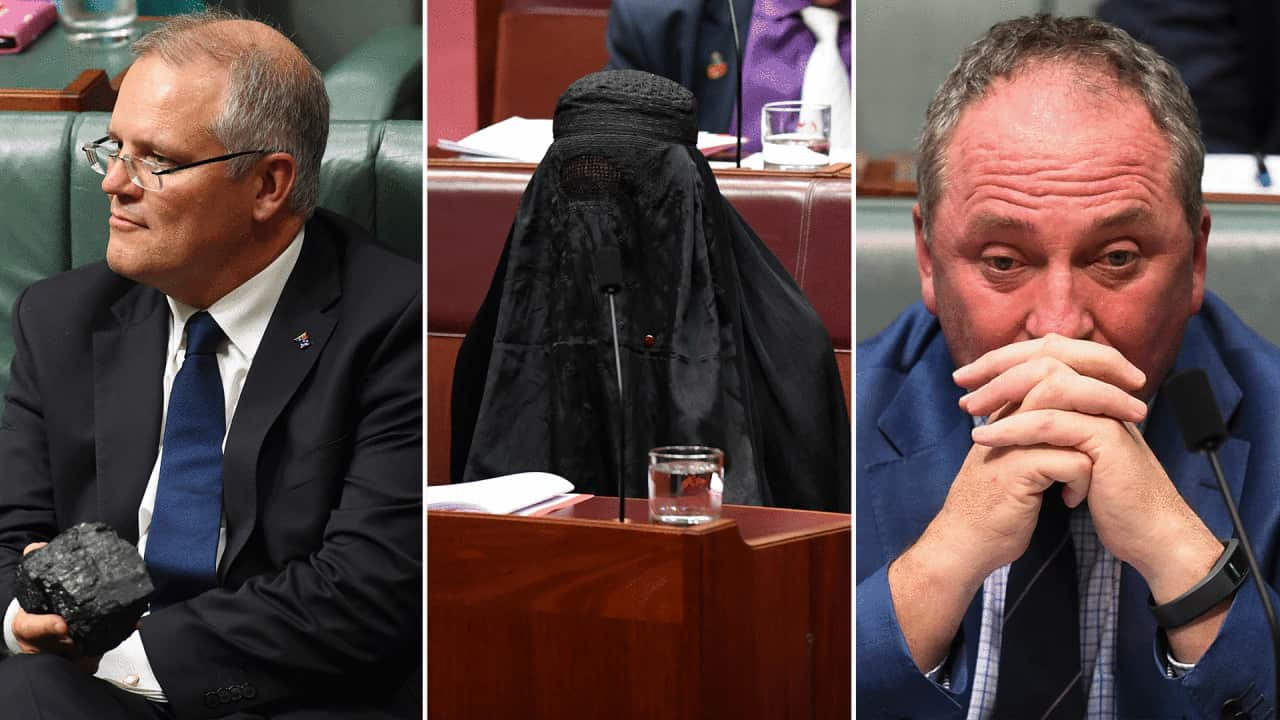On 18 May this year, Australians will head to the polls to decide who's going to run the country. But how does it all work?
Who can vote?
If you're an Australian citizen aged 18 years or older then you are required to vote in this year's federal election.
But it's up to every voter to make sure they are on the electoral roll and their details are correct. Otherwise, they may not be able to cast a ballot. Phil Diak of the Australian Electoral Commission told SBS News almost .
Phil Diak of the Australian Electoral Commission told SBS News almost .

Voters at Bondi Surf Bathers Life Saving Club. Source: AAP
"It's really important for people who have moved since the last federal election or since they enroled to make sure their address details are up-to-date," he said.
The electoral roll is set to close at 8pm on 18 April. Mr Diak urged Australians to before then so they can "have their say".
What happens on election day?
While , most Australians will head to a local polling place on election day.
The obvious advantage of in-person voting is the availability of a "democracy sausage", or fundraising barbeques. "If you're voting on election day in your home electorate, your name will be marked off the electoral roll and you'll be given a green ballot paper for the House of Representatives and a white ballot paper for the Senate," Mr Diak said.
"If you're voting on election day in your home electorate, your name will be marked off the electoral roll and you'll be given a green ballot paper for the House of Representatives and a white ballot paper for the Senate," Mr Diak said.

Bill Shorten eats a sausage sandwich on 2016 election day. Source: AAP
"The voting method for these ballot papers is different so it's very important to follow the instructions on the ballot paper."
The House of Representatives
The House of Representatives is also known as the "house of government", because whoever controls the chamber forms the government of the day.
"For the green House of Representatives ballot paper, you need to number every box with consecutive numbers from one through to however many candidates are on the ballot paper," Mr Diak said.
The candidate - representing the likes of Liberal, National, Labor, the Greens - who gets more than 50 per cent of the vote wins that electorate.
At the 2019 election, 151 people will be selected to sit in the House of Representatives.
So if no one candidate gets more than 50 per cent at the first count, the person with the least votes is eliminated, and the people who voted for them have their second preferences counted.
This continues until one of the candidates has more than 50 per cent of the vote.
How government is formed
The winning candidate from every electorate is tallied and the party with the majority of seats - that is, 76 - forms government and the leader of that party assumes the role of prime minister.
If neither party has enough seats to form government, it's called a hung parliament.
Political parties then approach other parties or independent members, and ask them to form a coalition.
This happened in 2010, when Julia Gillard had to form government with the help of crossbenchers.
What about the Senate?
There's also the white Senate ballot paper, which is far larger than its green counterpart.
The Senate is Australia's upper house or, "a house of review and a powerful check on the government of the day," according to parliamentary material.
Each state will elect six senators, while the Australian Capital Territory and the Northern Territory will elect two Senators, each. There are two ways to vote for the Senate - above the line or below the line.
There are two ways to vote for the Senate - above the line or below the line.

MP Bob Katter with ballot papers in 2016. Source: AAP
If you want to vote above the line, you need to number at least six boxes for a party or group.
If you want to vote below the line, you will need to number the candidates in order of your first choice to at least your 12th choice
From there, you can continue to number the candidates in as many boxes below the line as you like.


